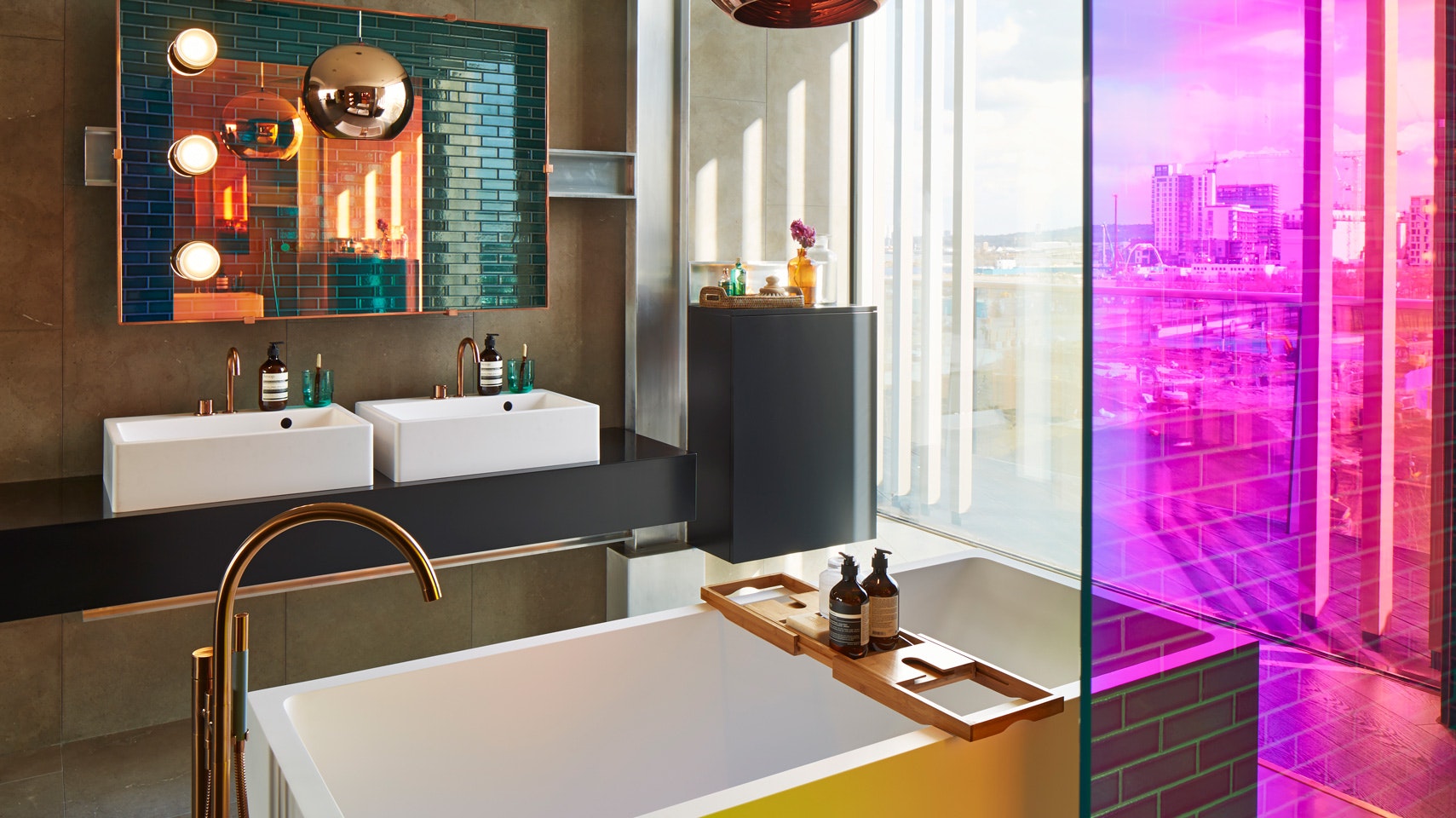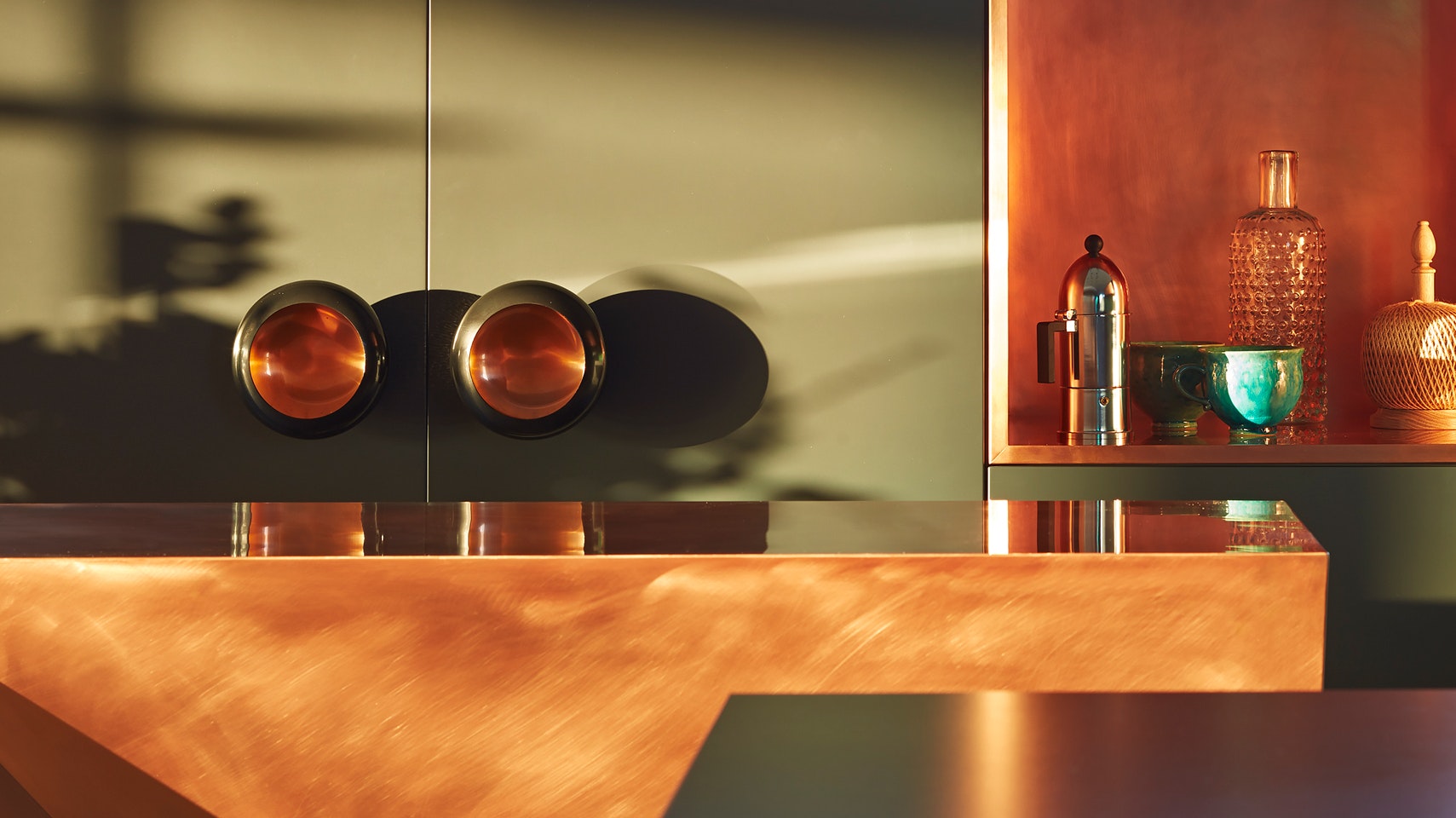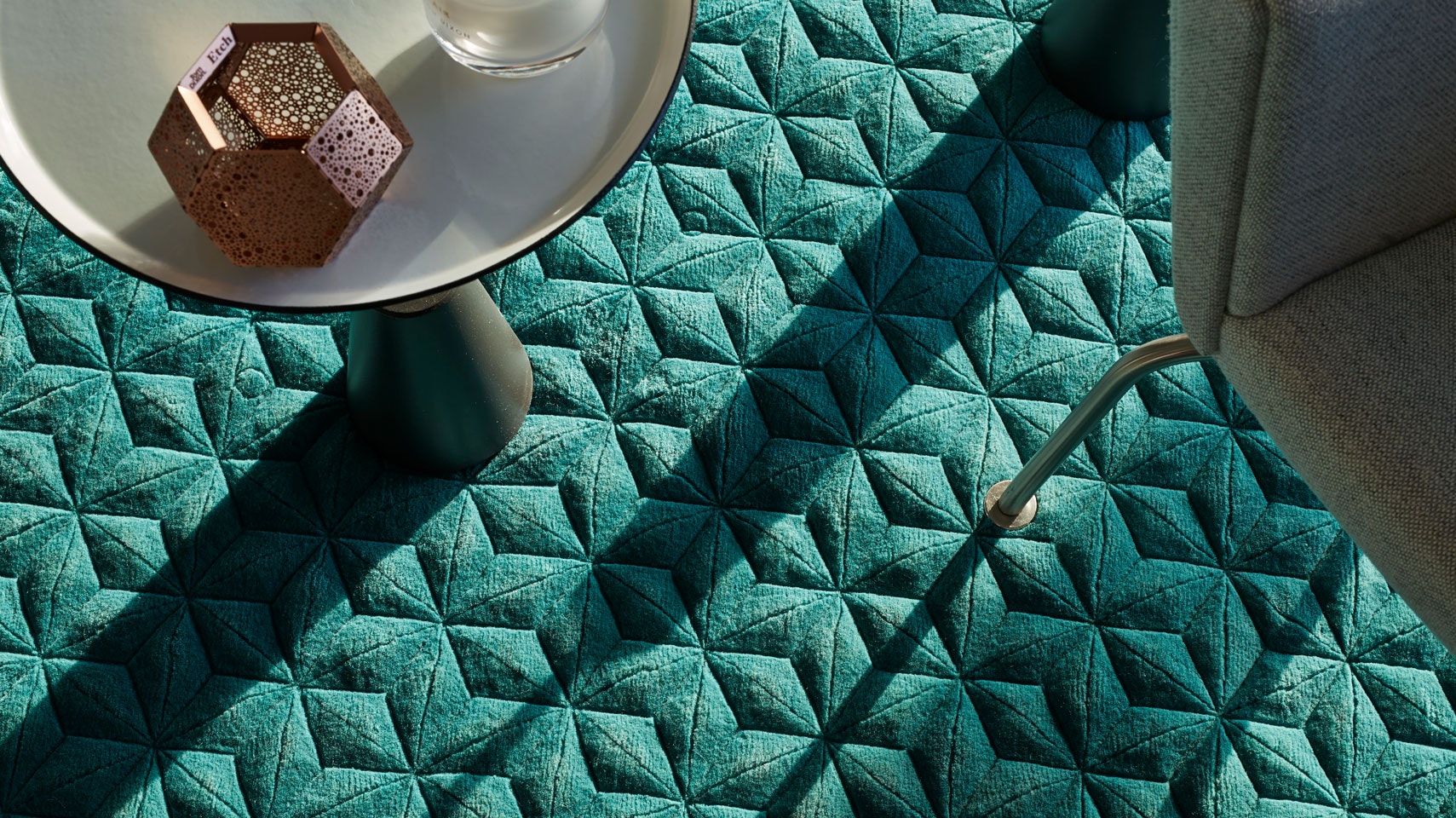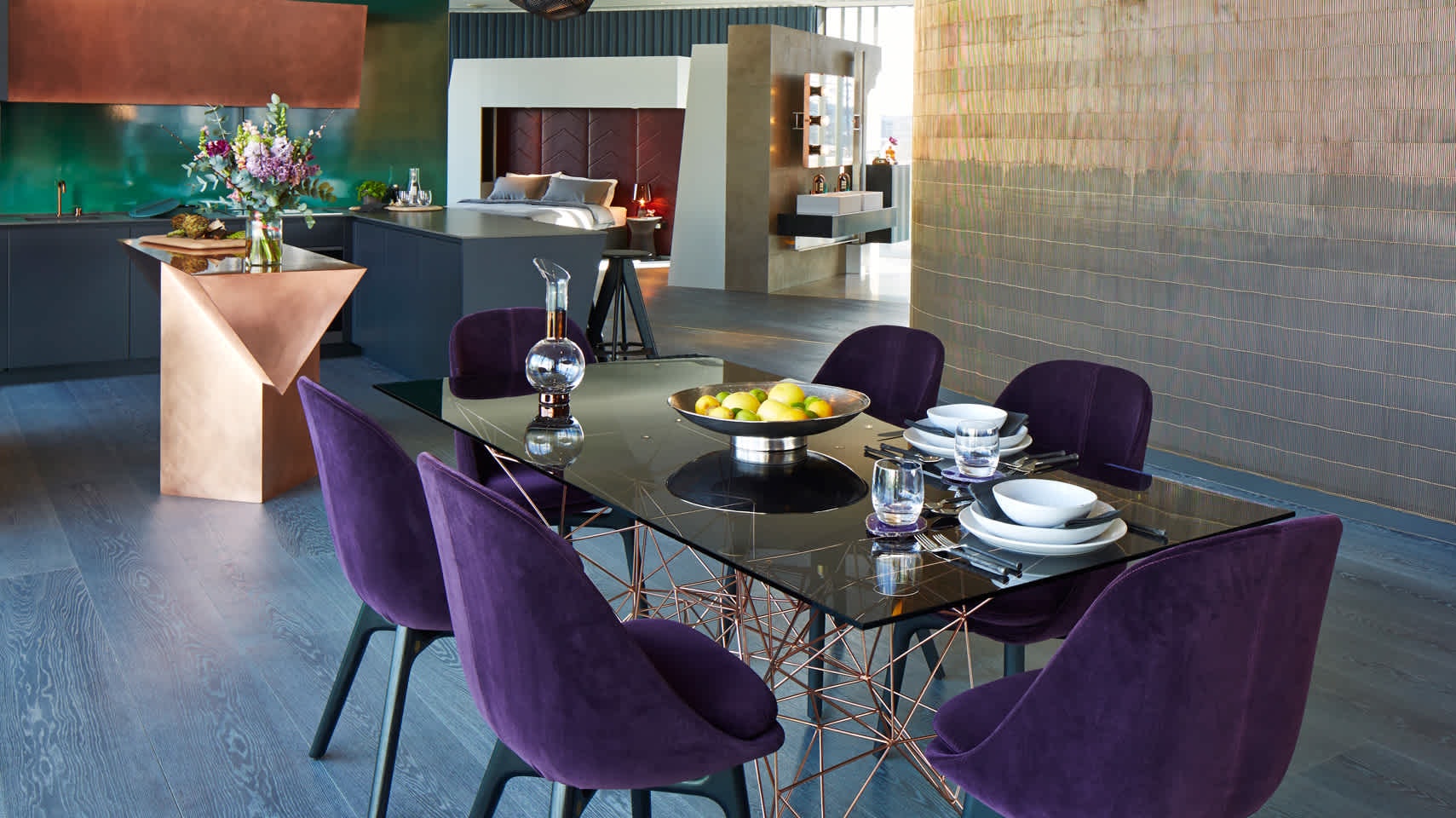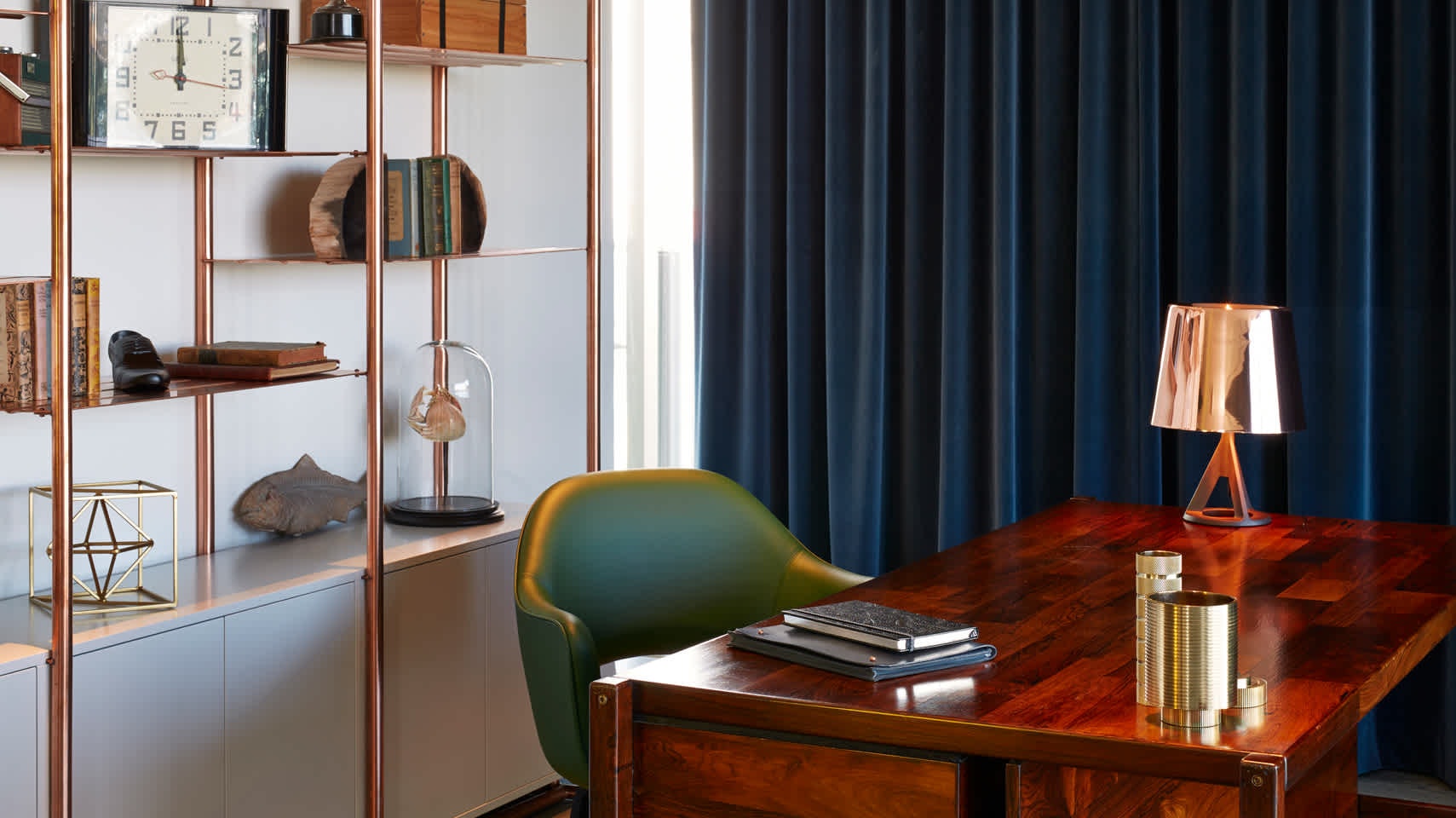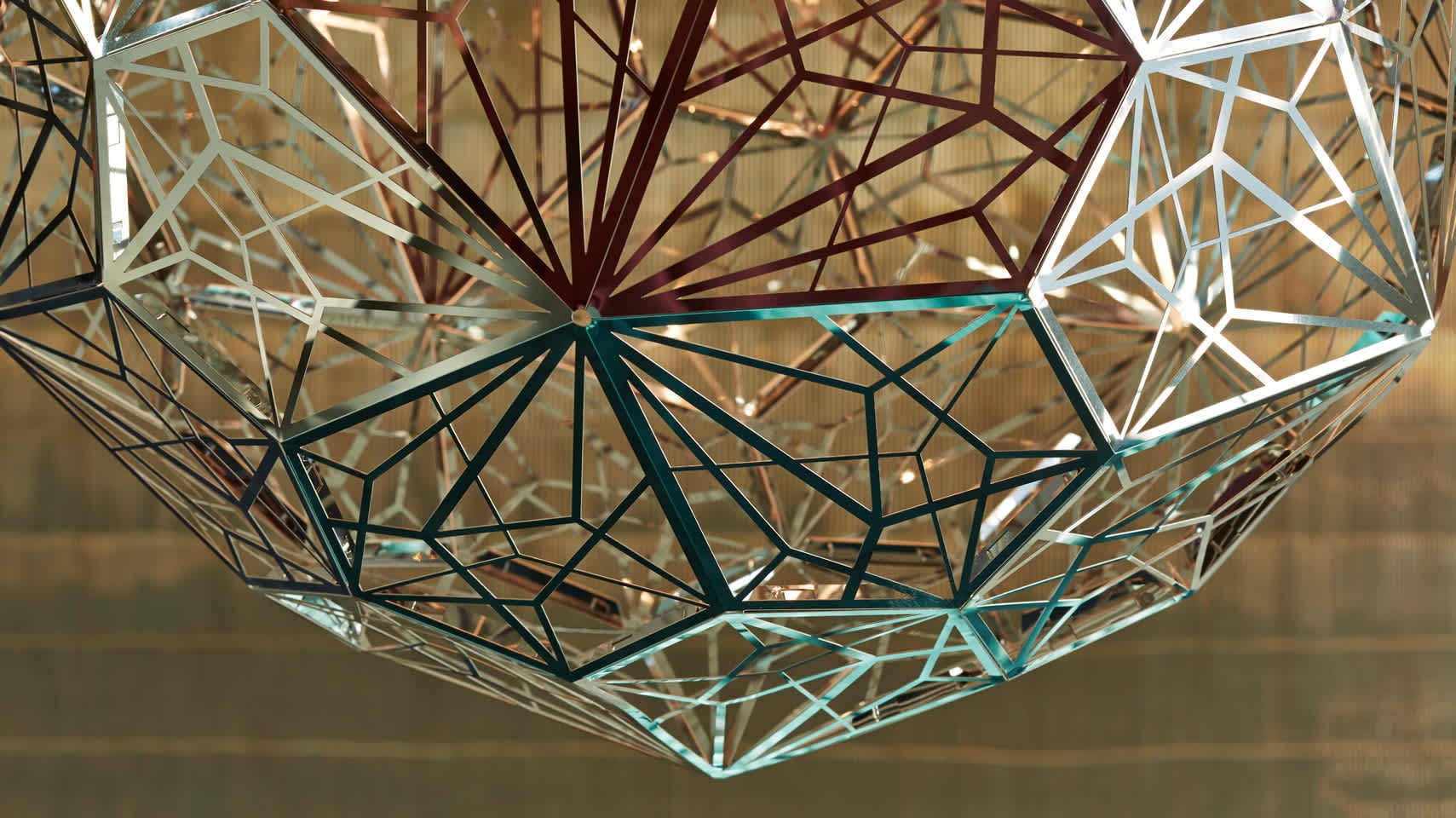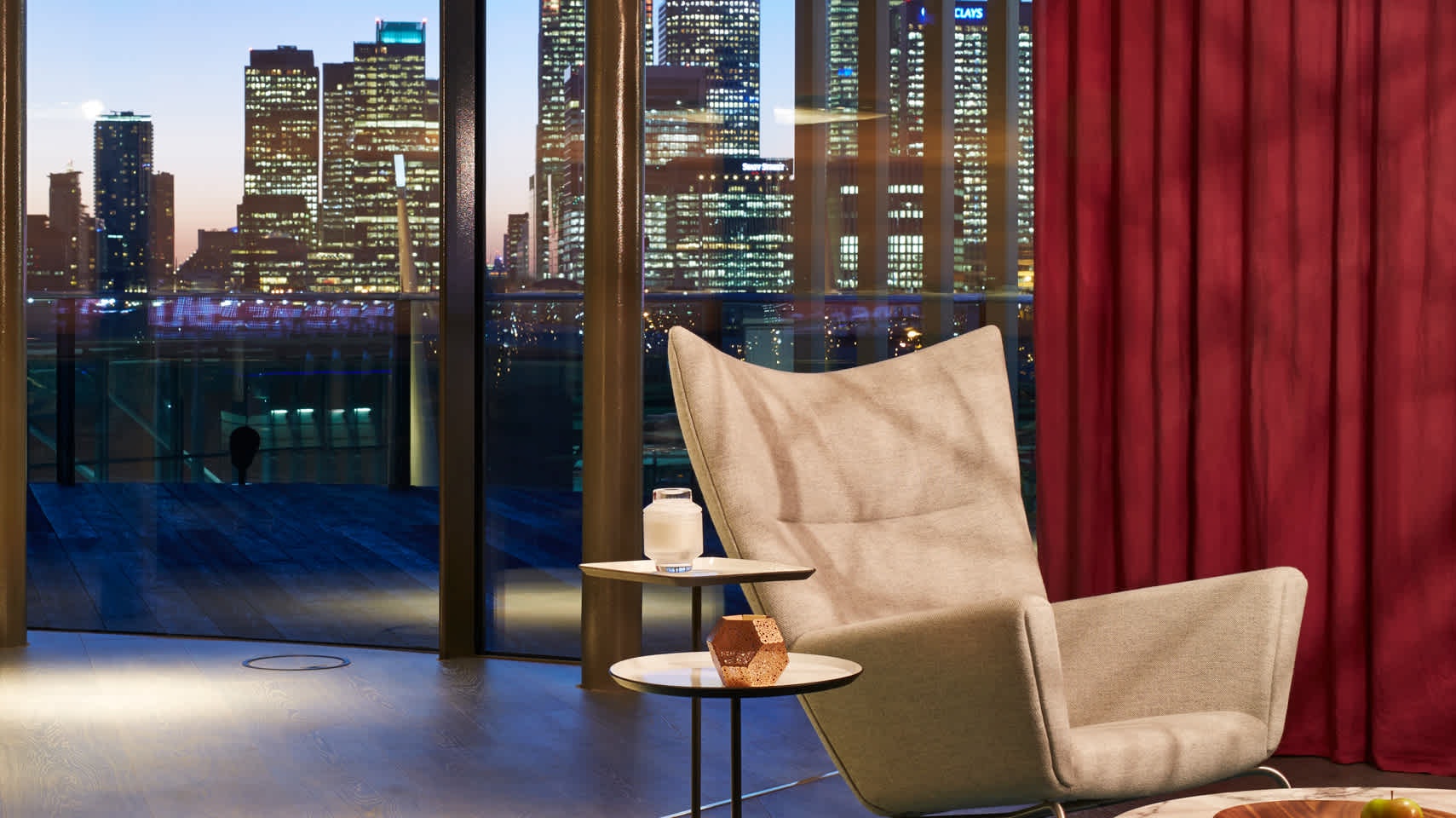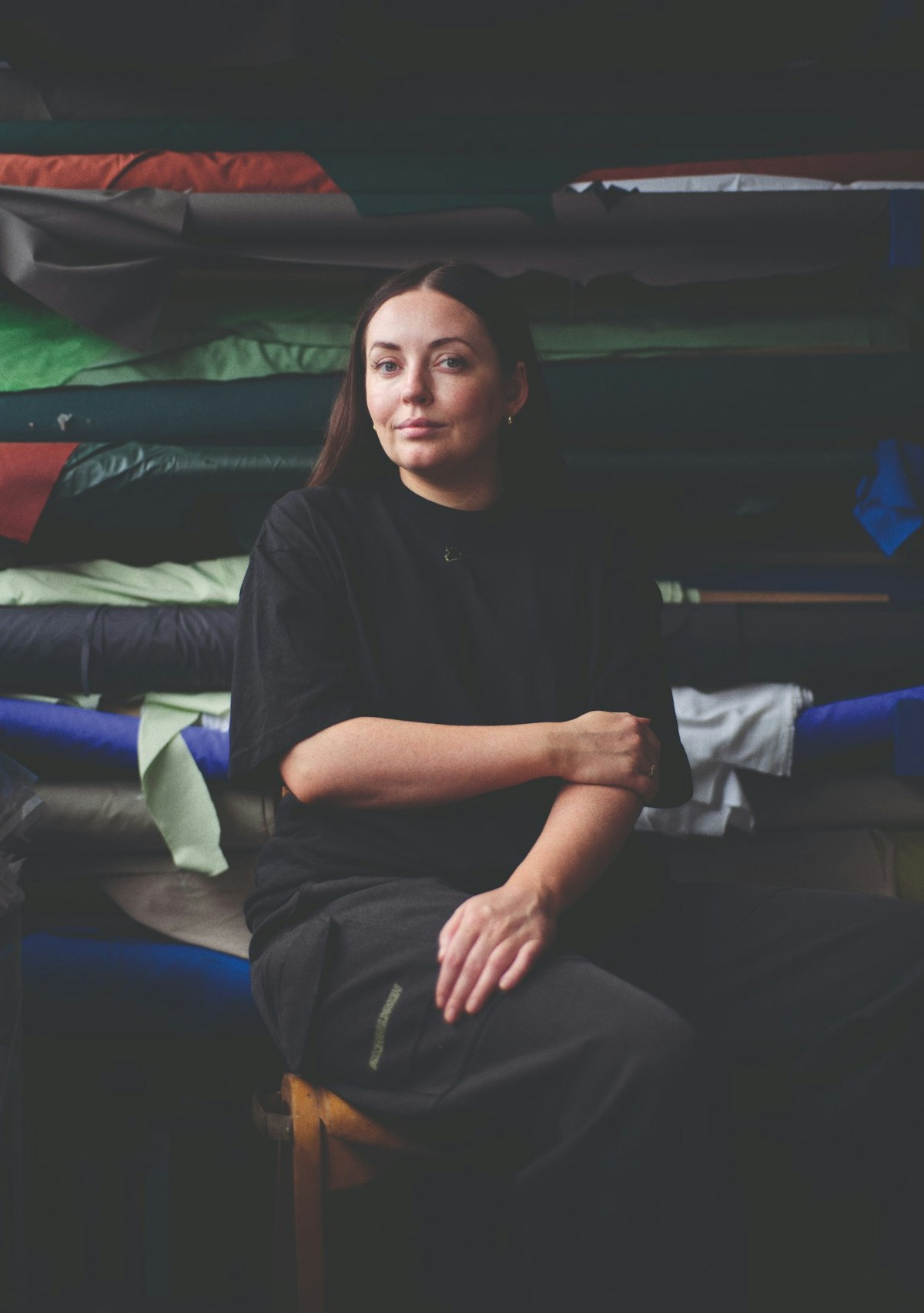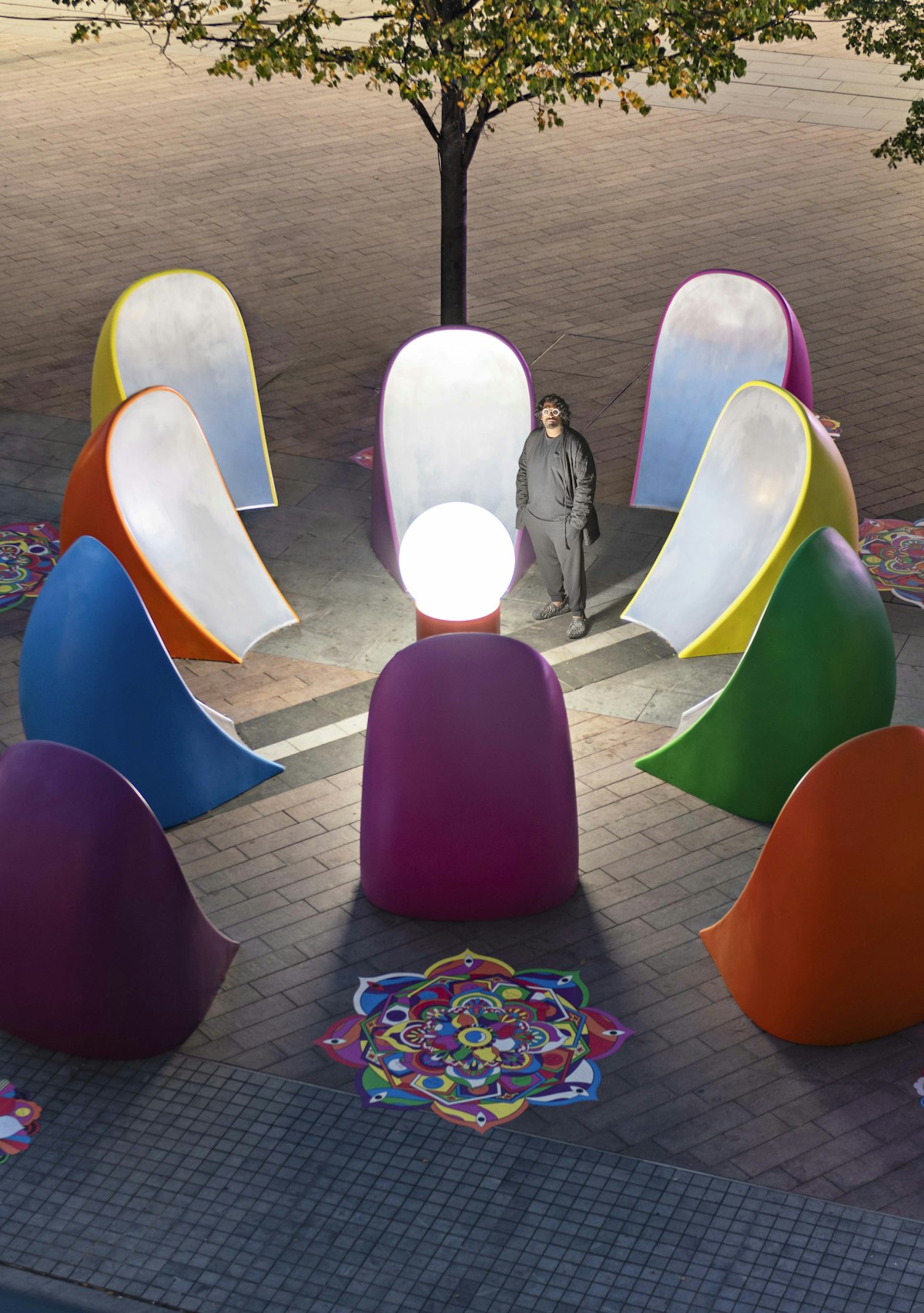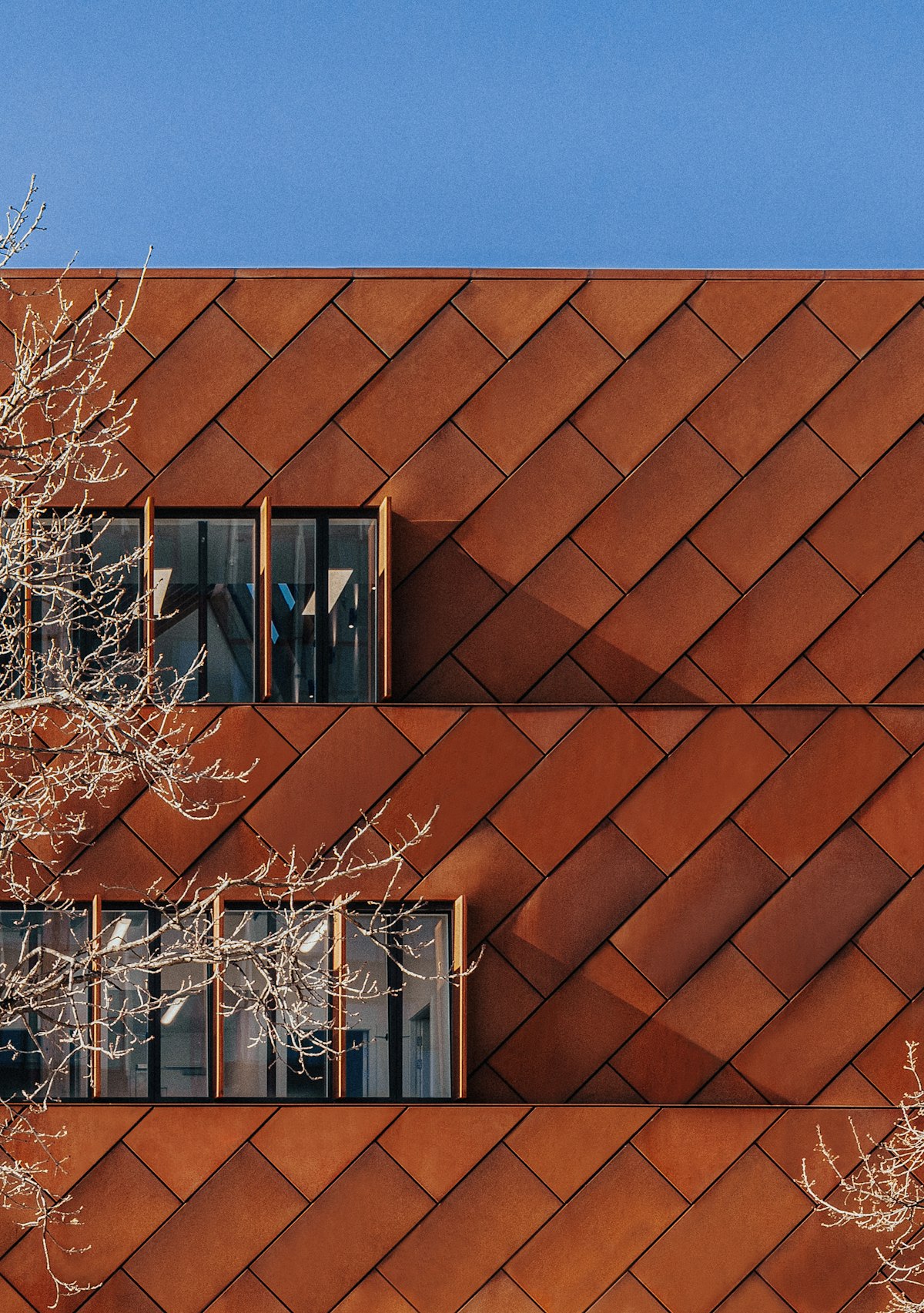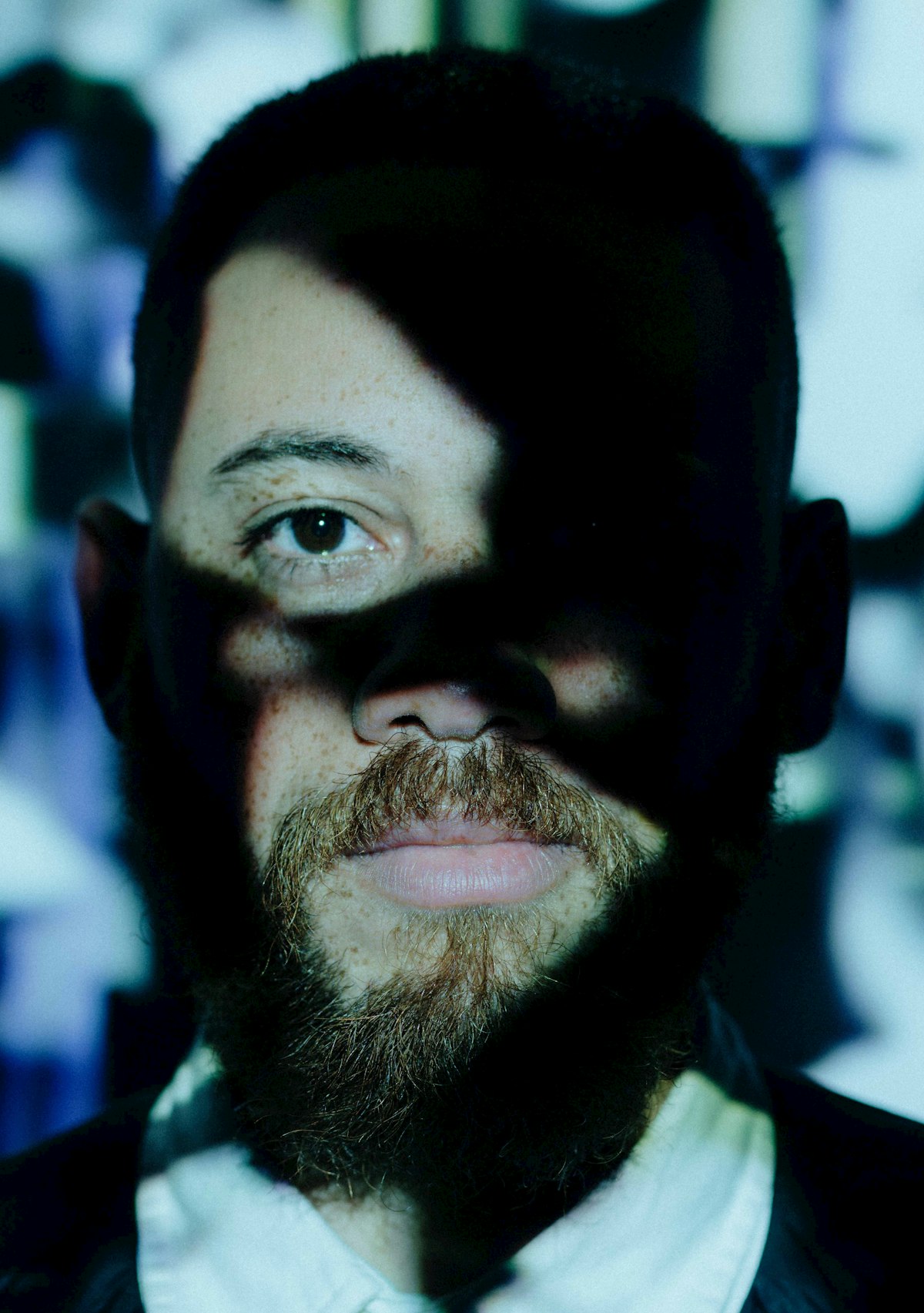
Tom Dixon at Greenwich Peninsula
The Peninsula has long been a stomping ground for British industrial designer Tom Dixon. From age five, Dixon and his family lived in Blackheath, just up the hill from Greenwich. “We used to go to the Cutty Sark, so I have vivid memories of the maritime history of the area.” Given this, it wasn’t tricky to convince Dixon to contribute his high-concept interiors to a limited-edition series of SOM-designed apartments and lofts, housed within the new Upper Riverside district. “The idea was to make them a bit grittier, a bit more ‘British’ in a way—to try and bring in some warmth and realness,” says Dixon.
Working with a British craftsman from Wiltshire, Dixon has created copper-clad cabinetry and bold, freestanding anvils for the kitchens, while the bathroom walls are clad in glazed bricks, which reference the traditional salt-glazed bricks that have been used in London for centuries.
“We’ve tried to use some of the remaining local industry—there are people who still do the casting of lamp posts in Greenwich, and people that make bricks in Luton, and companies that make things relatively locally, like the enamel we’re using for kitchen splash-backs is from the people who make the London Underground signs. It was important to me to have symbolic items to do with industry, because industry had been a large part of the Peninsula until relatively recently.”
It’s a history note that Dixon knows firsthand: “Even when I was a boy I used to jump on the motorbike and drive to Greenwich to get things cast and machined, because that whole part of South London remained a good place for getting things made—and I still do that now!”
This is indicative of Dixon’s self-taught entrée into the design world. He is infamously untutored in any traditional sense, and first found an affinity for materiality, manufacturing and form— concerns that are at the roots of his working practice—while attending Holland Park Comprehensive in the mid-1970s, which had a decent pottery department and life-drawing stream. His first lesson in welding came in a car body repair shop in South London—skills Dixon was quick to appropriate to create salvaged-metal furniture.
A doodle of a chicken turned into an idea for his signature ‘S-Chair’, which circuitously propelled him to the Italian luxury goods industry (the chair is now held in the permanent collection of the Museum of Modern Art in New York).
Though Dixon held down a day job with retail giant Habitat for most of the early 2000s, he established his eponymous furniture and light brand in 2002, which was shortly followed by Design Research Studio, a firm that develops high-concept interiors for restaurants, hotels, shops and corporate headquarters the world over, including, recently, London’s Mondrian Hotel, and Paris-based restaurant Éclectic. Dixon now keeps his own HQ in the Portobello Docks on Ladbroke Grove, a giant warehouse space that also houses Stevie Parle’s Dock Kitchen.
Innovative British craftsmanship is Dixon’s USP, and his design firm is a London company to the bone; this positioning is intrinsic to his conceptual approach to not only the lofts within Upper Riverside, but also the adjacent Craft London.
“The idea was to make them a bit grittier, a bit more ‘British’ in a way—to try and bring in some warmth and realness.”
“We suggested the idea of putting in objects that literally have some of the dirt of London in them. In the Craft London café, for instance, the bricks were made out of London mud. Within the Peninsula’s old infrastructure was a recycling centre where all the cinder from Victorian coal-fires would come via boat to be recycled into cinder blocks or brick. Nothing was wasted, so the idea of turning some of the mud of London into the infrastructure here appealed to us.”
Each of the double-height residences feature one of two bright, bold palettes: “They seem very modern and fresh but in fact they are inspired by old paintings of the area, the sunsets and surrounding nature,” says Dixon. “They incorporate rich hues, deep greens and blues and are offset by the dichroic coloured glass screens and iridescent finishes, which change in the light in a similar way to light refracting on the river.”
In the public spaces, too, Dixon has set about drawing the outside in: “We used this idea of sedimentary layers, of erosion and tides, in the design of the lobby—with its stepped curves, the designs look almost Art Deco, but at the same time they make it feel organic and local,” he says. Stepping into the dwellings, the Dixon touch—more copper than Midas—is immediately evident in the natural and warm materials and richly layered surfaces, which make use of copper, leather and wood.
“Coupled with the bold sculptural forms, the space becomes comfortable and welcoming,” says Dixon. “Robust and industrial materials used throughout lend a strong British narrative; they make reference to the history of Greenwich. Living here should be as much about the growing reeds in the river outside, and the area’s industrial past, as the new, the pioneering and futuristic feel of the Peninsula.”
It’s an interesting marriage in Dixon’s work, this meeting of respect for industry and classic materiality with integration of high-tech production techniques. Take Dixon’s pick of design features within the Upper Riverside: “I love the iridescent shower screen, which gives a touch of futurism and a flash of colour to a space that so often is about pale and anaemic colours and humourless hygiene.”
The graphic chevron detailing, which echoes the angles of the architecture, also serves as a more light-hearted design feature. It’s an approach that’s a smidge tongue-in-cheek, always concerned with flexing boundaries, and thinking outside the constraints of his industry: “For me, design is the gateway to many adventures and learning about lots of things that I would not normally be involved in. A good example is the park that we just worked on for the Peninsula—I would never have thought of being a gardener!”
We asked Gareth Payne, the lead designer for Tom Dixon’s Design Research Studio Edition, what he’s enjoying around East London and at home.
Your favourite place to eat out in East London?
Brunch at the Pavilion in Victoria Park, Stevie Parle’s Rotorino on Kingsland Road for something from southern Italy, or pizza from Yard Sale on Lower Clapton Road. Also, the Clove Club at Shoreditch Town Hall—chef Isaac McHale’s buttermilk fried chicken is exceptional.
Best shop in East London?
The Midcentury Modern shows at the Erno Goldfinger-designed Haggerston School, and the Modern Warehouse in Hackney are great for mid-century classics.
Favourite piece of furniture in your home right now?
A sample of one of Tom Dixon’s ‘Beat’ lights and a 1950s McIntosh sideboard. We also have lots of different chairs at home; favourites are either our Wegner ‘Wishbone’ chairs or the Ercol rocking chair.
Daily uniform?
A well-worn pair of brogues, jeans and a shirt.
What are you reading?
The Electric Kool Aid Acid Test by Tom Wolfe. It’s about Ken Kesey and the Merry Pranksters travelling across America in a psychedelic school bus.
